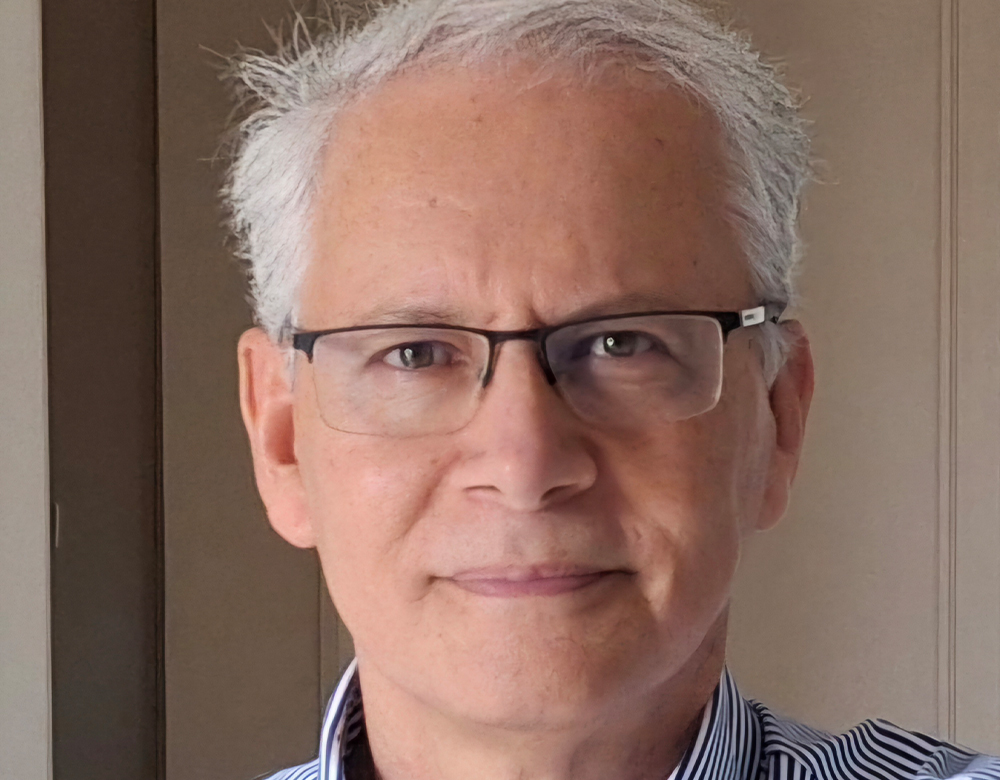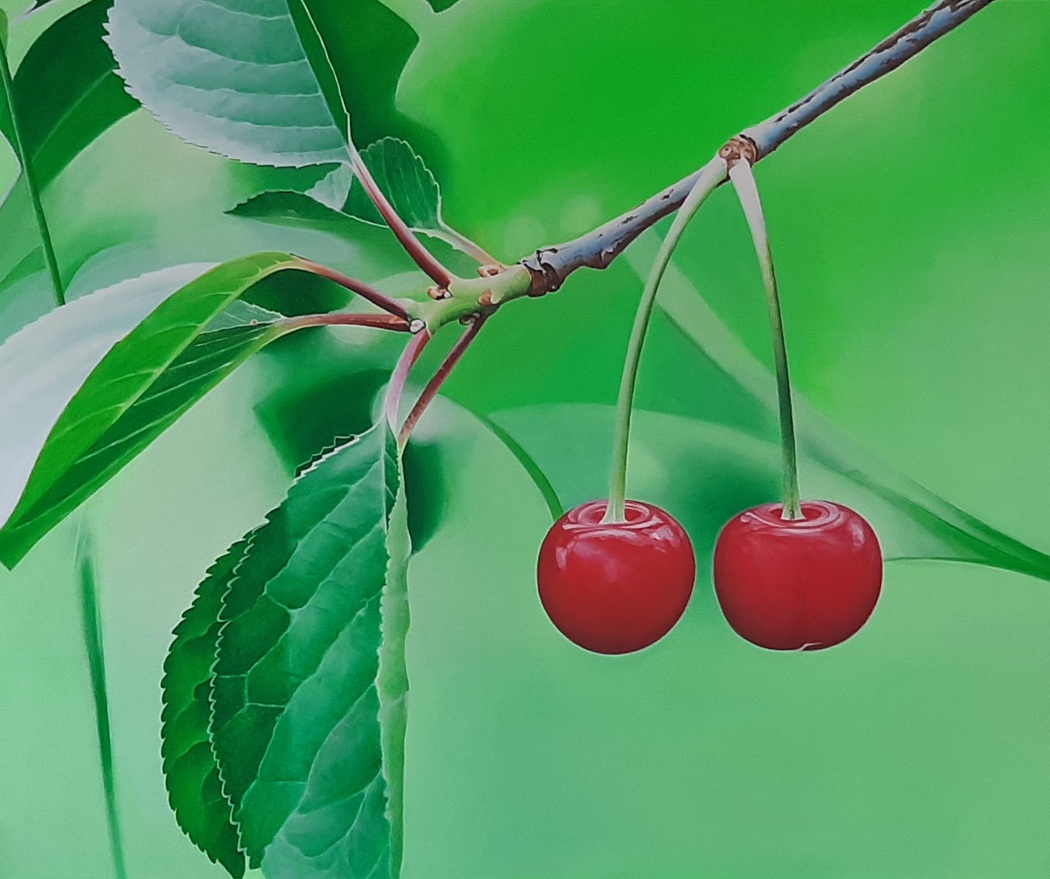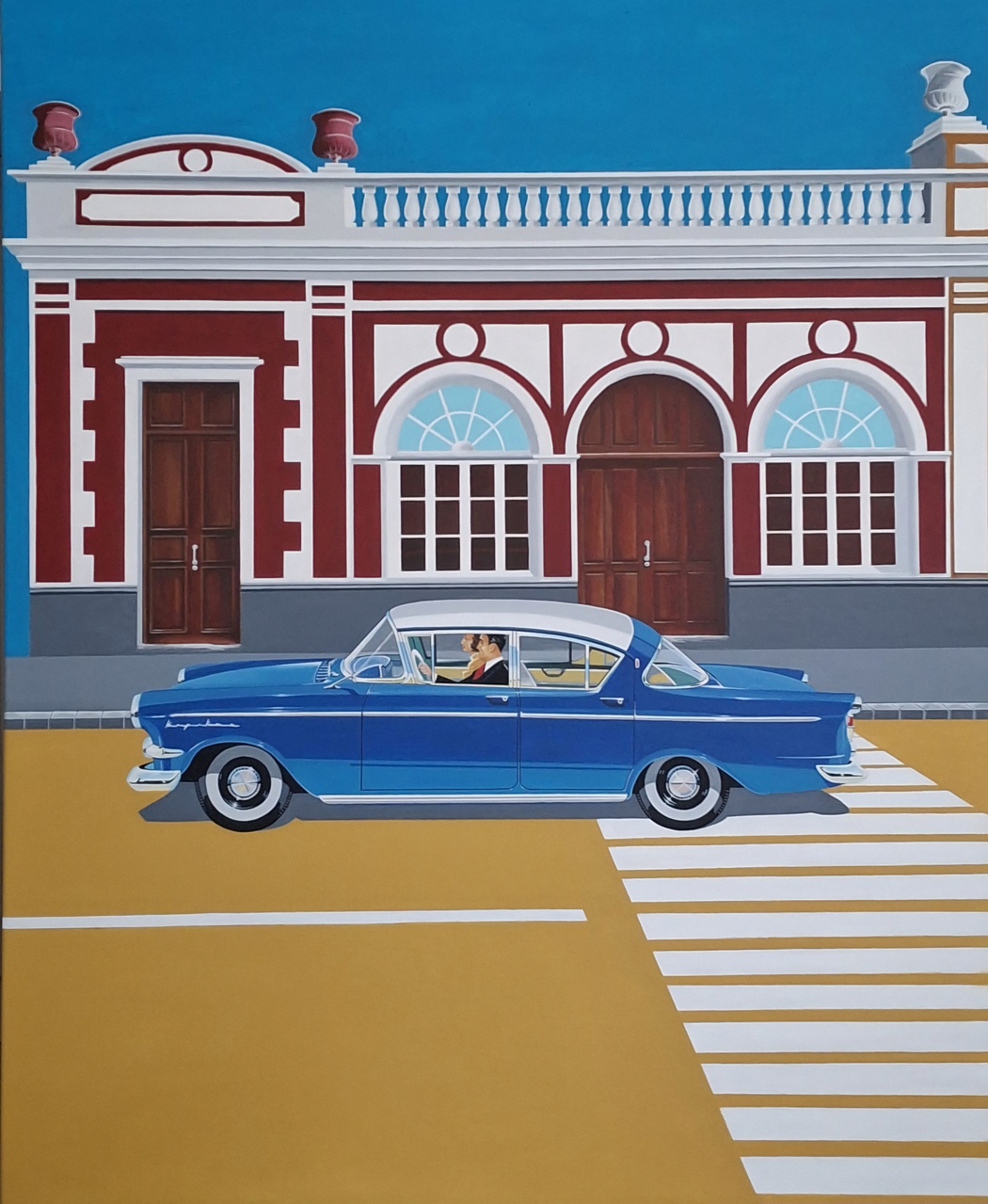Santiago J. Henríquez
Year of birth: 1961
Where do you live: Las Palmas de Gran Canaria, Canary Islands, Spain.
Your education: PhD in English Literature (1991), University of La Laguna (Tenerife, Canary Islands), Graduate Expert in Senior Public Management (2007), and Art Theory (2020).
Describe your art in three words: Delight, joyfulness, vision.
Your discipline: Acrylic on 3D canvas.
Instagram

How did your background in philology and literature influence your approach to visual arts?
My professional career in English Philology, particularly in Anglo-American Literature, as a researcher and university professor, came later in life. From a very young age, I had a passion for painting. Over time, I also developed an interest in linguistics, as well as reading and writing. Before enrolling in Philology, I devoted myself to Fine Arts. Very few people know this, but that was the case. I remember my parents being quite upset because, in the 1980s, they didn’t see any future for painting as a career for one of their sons. In other words, they didn’t see a clear future for one of their two sons in this field. I learned to draw and paint with my mother. She once told me, “This summer, you will dedicate yourself to painting 40 free-drawing sheets.” And that’s what I did. When she was young, she also painted, although she eventually devoted herself to classical music. There was always a creative atmosphere at home. My father was a hard-working farmer, and my mother was a virtuoso musician in every sense. In my case, as with my brother and sister, I didn’t focus as much on classical music as I did on painting. What I mean is that my dedication was first to painting. Later, because I enjoyed reading, I studied the history of Anglo-American literature, ultimately becoming a senior professor in the field at the University of Las Palmas de Gran Canaria. My knowledge in the art field has influenced my literature classes. When I was in front of my students, I always drew many parallels between literature and painting. My classes were greatly enriched by using this combination. As a result, I’ve published dozens of articles and several books explaining many of these approaches, some of which are freely available online.
Your works range from still life painting to vintage images. How do you decide on a theme for your paintings?
I started by drawing Walt Disney characters. It was very simple for a seven-year-old boy, as I just had to choose a color and paint. I didn’t need to mix colors to get a new one or constantly think about the direction of light to avoid ruining the picture. Later, I dedicated myself to drawing still life. I remember painting several pictures of apples, oranges, lemons, prickly pears, and a large-scale painting of a man on a donkey selling his fruit harvest in Teror, one of the most typical villages in the north of Gran Canaria. I lost that painting, and I always think about it because it was so beautiful—it was my masterpiece at 16. They were all created in a house my father had in the middle of his banana plantation. I continue to paint in the same old house 45 years later. Isn’t that curious? The only thing that has changed is the interior decoration of the rooms and my technique in composition and painting. Now I use acrylics instead of oils because I find this medium clean, pure, and natural. I love the way acrylics have evolved. I enjoy how the water glides across the canvas, both blurring and creating clearly visible shapes. I love still life, of course, but I also love vintage compositions that invite us to travel back in time and relive experiences around objects that are now in museums. All of this comes from the past: from my father’s farm, from the old house in the middle of San Lorenzo Valley where the old plantation is… it’s as if I never wanted that time to end, although both my paintings and technique have changed a lot.
 Santiago J. Henríquez | Cerezas
Santiago J. Henríquez | Cerezas
What role does color play in your work, and how do you choose your color palette?
For me, the choice of color is fundamental. In most of my paintings, there must be a dark area and a light area. I am always looking for a transition of colors from a dark area to a lighter one in my pieces. I study how this transition will reflect on the canvas before I begin. Each color offers an infinite number of possibilities that increase in relation to others. I enjoy studying tonalities. I’m not exactly a tonalist, but when I look at an apple, a lemon, or a lettuce, whether at home or in the market, I always see new and surprising tonalities. The eruption of colors in objects depends on knowing how to look at them with an artist’s eye. Vision is essential for acrylic painting, as it allows you to observe the subject, simplify shapes, and capture the essence of the image.
Can you share more about your process of creating large-scale paintings with oils and acrylics?
Now that I have a bit more time to paint since my recent retirement, I read a lot about using acrylics and try to stay up to date. In a year or two, I hope to be better prepared. Painting with acrylics requires a constant process of study and updating. You can’t rush it, paint hastily, and finish the work as quickly as possible—that’s absolutely impossible; the paintings wouldn’t turn out well. I’m very concerned about the artist’s conscience. By this, I mean finishing a painting only when all the previous objectives of the painting have been met. Water evaporates quickly, and the colors for each canvas must be prepared beforehand to avoid wasting time during the process. Sometimes I have to prepare specific mixtures in advance and store them in small glass jars for when needed. You must choose a topic that you enjoy from start to finish. And, most importantly, you must enjoy the painting process throughout. Only then can a painting turn out well enough to be proud of and share with others. Don’t be alarmed, but in my case, it takes more than 150 hours on average to finish a painting. As I mentioned earlier, acrylics require you to find new tones as you progress with the painting. A prior study of what you want to do is 100% necessary, but the real confrontation with the painting inevitably arises during the artistic process.
 Santiago J. Henríquez | Limonero
Santiago J. Henríquez | Limonero
What emotions or messages do you hope your viewers take away from your paintings?
In almost all of my paintings, I try to present the viewers with the beauty of colors. I like to play with colors just as much as with perspective, light, unity/variety, contrast, emphasis, and balance. For me, the overall composition and the little details play on the same team. The placement of each element on the canvas is as important as the details that make the image appear truly unique and beautiful. The language I use when writing a paper, a book chapter, or an article suddenly becomes a paintbrush when painting a picture. God has gifted us each with our own style and the ability to engage creativity with our thoughts and mind. In my case, I would really like viewers to appreciate the beauty of simple, everyday things: to stop for a moment and look at, appreciate, and discover the variety of colors that light awakens in each object. Drawing doesn’t deceive, as Salvador Dalí said during Catalan surrealism in the early 20th century. Beauty will always bring us eternal joy, as John Keats wrote in “Endymion” during the early 19th century. I simply try not to forget these two things. Art is in the eye, which is the one who truly looks and paints.
Your work often features vintage and universal images. Are there any specific stories or experiences that inspire these subjects?
Yes. All my paintings have a bit of me in them. In “Angela and Santiago’s House with a ’58 Opel Kapitan,” my grandparents’ house appears in the background. It’s located on the main highway of the city, with my parents’ original blue car driving right in front of it. I spent many years traveling back and forth, like any child, to my grandparents’ house. I traveled countless times in that blue Opel of my parents. This painting is a tribute to them, to my childhood, and to all the family work. All the elements in this picture mean a lot to me. It took me a lot of time to compose and paint it. I worked on it for about 250 hours. It was hard to work on because there are so many important details, and, as you can see, each detail has its light and shadow. The initial drawing, the search for proportions, the inclusion of some characters, the roundness of the wheels, the metallic shine of the car… everything plays an important role. Even more so, since it was about recovering something that belongs to the history of my family, my life, my childhood, my youth… though the house still exists, and the model of this magnificent German car is still a collector’s item in Europe. Unfortunately, my father’s car was lost in an accident. However, he survived thanks to the durability and protection offered by the ’58 Opel Kapitan model. I remember it fondly. This is the reason I decided to dedicate my time and leave a part of my soul in it. The result was definitely worth it.
 Santiago J. Henríquez | Casa de Ángela y Santiago con Opel Kapitan del 58
Santiago J. Henríquez | Casa de Ángela y Santiago con Opel Kapitan del 58
You have a rich background in literature and art theory. How do you combine these disciplines in your creative practice?
This is a very interesting question. It could take a long time to answer, but to summarize, I’ll say that, in my case, willpower and patience have brought me great results. I’ve never believed that rushing or being urgent about finishing something brings good results. Everything takes time. Every task—whether reading a good book, pruning a tree, tidying up the garden, decorating your house, or preparing for a final exam—requires a process. Every process takes time. I wouldn’t like to explain this with metaphors or concepts that are difficult to understand. What I mean is that all of us, absolutely all of us, are masters of our time. Time is what makes us strong, great, and even genius. Art museums are full of great works, but also of the time so many artists dedicated to giving meaning to their lives. For me, literature and art, in general, are gifts for which I must give thanks to life. The in-depth study of both disciplines has brought great moments to my life. My time and dedication to these two topics have given meaning to my life. As a result, I enjoyed the opportunity to be a university professor for many years and the organizer of four successful exhibitions where I had the chance to display many of my earlier works.

Leave a Reply